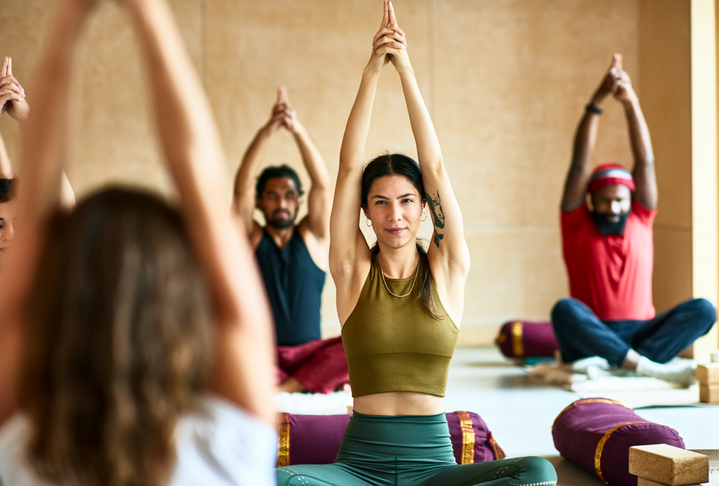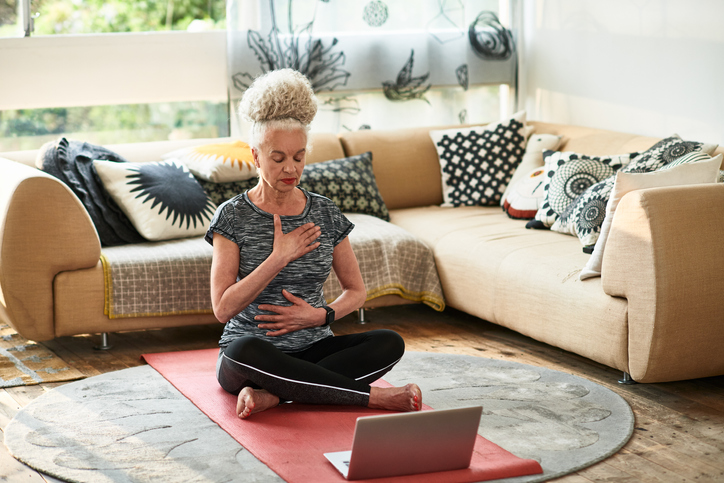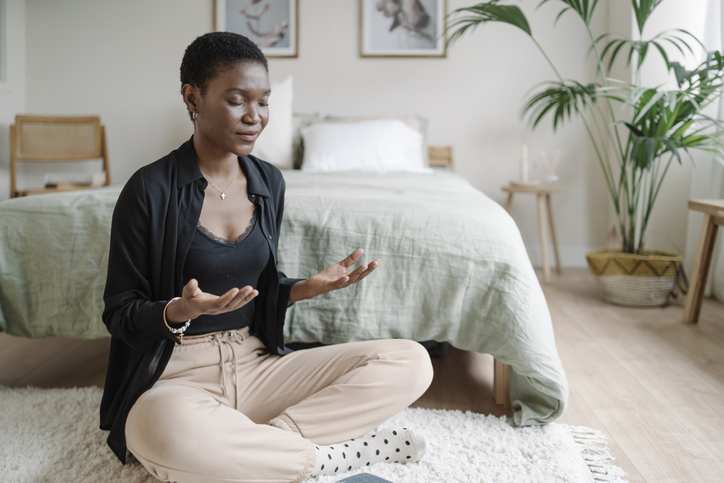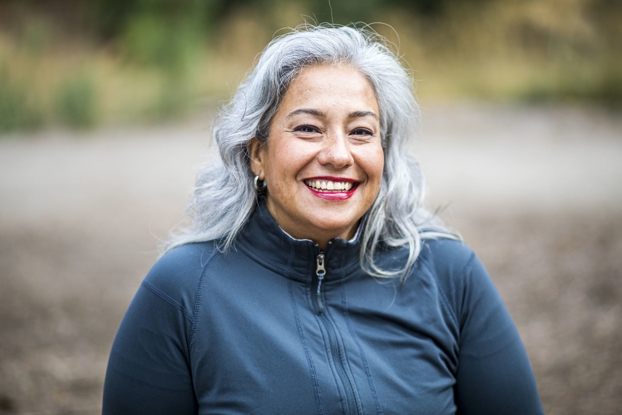How to make meditation a part of your self-care routine
- Category: Wellness
- Posted On:
- Written By: Rev. Abina Johnson

Meditation is for everybody
When you think of meditation, you may picture solitary monks dressed in robes, the daunting silence of far-off temples, or a yogi bending their body into unimaginable contortions. You may be intrigued, but assume meditation is too difficult to learn—or that you don’t have the right skills, tools, or lifestyle for it to “work”.
However, the truth is that anyone can meditate, and everyone can benefit from it. While it’s far from “easy” to calm our racing thoughts and minds, it’s surprisingly simple to get started.
Bringing meditation into your life is an incredible way to increase relaxation and improve your mood. But the benefits don’t stop there. Keep reading to learn more about how and why you should make meditation a part of your self-care routine.

Learn more: Managing your mental health during stressful times
What is meditation?
Meditation is the process of “training your brain” and increasing awareness, which results in a feeling of attentive calm. Through meditation, you learn to observe your thoughts, increase your focus, and be more present in the moment.
Rather than completely “emptying” the mind, meditation can help you fill your mind with the right kind of things.

The benefits of meditation are vast
While you may know about meditation’s ability to improve mental health, provide a sense of calm, and reduce anxiety, meditation can also deliver physical benefits.
Harvard Health Publishing states that “deep abdominal breathing encourages full oxygen exchange.” It is known to slow the heartbeat and can help lower or stabilize blood pressure. According to research, meditation can help people manage a variety of conditions, including:
- Anxiety
- Asthma
- Cancer
- Chronic pain
- Depression
- Heart disease
- Irritable bowel syndrome
- Tension headaches
For beginners, start with a basic practice
Beginning a meditation practice doesn’t have to be complex or time-consuming. Just a couple minutes of intentional practice can be a great way to start experiencing the benefits. You can try it out anywhere, anytime.
Here’s how to get started:
- Get comfortable: Find a comfortable place to sit. You can sit cross-legged on a pillow or cushion, or upright on a chair with your feet firmly placed on the floor. If it feels ok for your body, try to sit straight. The top of the head should feel like it’s reaching to the sky, with your ears aligned over your shoulders. Keep your chin parallel to the floor, slightly tucked in. If it’s not comfortable for you to sit straight, no worries! Simply lie down, or find another position that works for you.
- Decide how long you will meditate: You can start with just 5-10 minutes. As you grow more confident, you can increase the time. Set a timer on your phone or watch so you don’t have to worry about checking the time.
- Now, try to keep still: Ideally, your position will remain the same throughout your practice.
- Focus awareness on your breath: Inhale fully, and exhale fully. Let your breath come in and go out naturally. There’s no need to “do” anything—just notice how it feels in your body to breathe.
- It’s normal for your mind to wander: Don’t get discouraged if you find your thoughts wandering! It’s completely normal and okay. Simply acknowledge that your mind has wandered, and gently bring your attention back to your breath.

Learn more: 7 stress-free ways to kick off the new year
If sitting still doesn’t work for you, try a different style
Not everyone enjoys a still, silent meditation. Particularly if you are feeling stressed or anxious, it can sometimes feel too difficult to just “sit there”.
Luckily, there are many different styles of meditation, and one is bound to work for you! Try experimenting with different approaches and methods until you find one that feels good.
For example, you may want to try:
- Walking meditation: Take yourself on a gentle walk. Try to be fully present while you are walking. Let any thoughts that arise (whether they be worries and concerns, or distractions and daydreams) simply pass. Keep bringing your attention back to the walk itself: experience the feeling and weight of each step. Notice your breathing as you move.
- Guided meditation: In a guided meditation, a teacher will lead you through a guided meditation experience (in-person or via audio). This can be a helpful style to begin with when you are learning to calm the mind. For a little “extra”, add on a couple minutes of silence after.
- Body scan meditation: Scan your body slowly by moving your awareness from toes to head, or vice versa. Give each body part a moment of attention and awareness, taking note of how it feels. This style of meditation can help create a sense of presence and great connection to your body.
- Metta meditation: Also called Loving Kindness meditation, this is the practice of sending well-wishes towards other people. Think of someone in your mind and visualize sending them a positive thought or wish. Through expressing love and care for others, we help cultivate love for ourselves, too.
Other forms of meditation include repeating a mantra, prayer, reading, reflecting, and journaling. Rather than getting caught up in the exact methodology, focus on finding a form of meditation that works best for you.
Did you know UMC has spaces for meditation?
The UMC campus offers four beautiful meditation rooms for our patients and visitors. Located next to the Chapel, each of these rooms has comfortable, velvet-lined benches and cozy, warm lighting. If you find you need a moment of peace and reflection, these quiet rooms can be the perfect place to take a break in comfort.
Learn more about our Spiritual Care by checking out our website.
About Reverend Abina Johnson
 Rev. Abina Johnson is the ACPE Certified Educator and is authorized by ACPE to assist University Medical Center New Orleans in receiving accreditation with ACPE, Inc. to offer Level I/Level II CPE. She is a board-certified chaplain with the Association of Professional Chaplains, and an ordained minister with the Cooperative Baptist Fellowship.
Rev. Abina Johnson is the ACPE Certified Educator and is authorized by ACPE to assist University Medical Center New Orleans in receiving accreditation with ACPE, Inc. to offer Level I/Level II CPE. She is a board-certified chaplain with the Association of Professional Chaplains, and an ordained minister with the Cooperative Baptist Fellowship.


